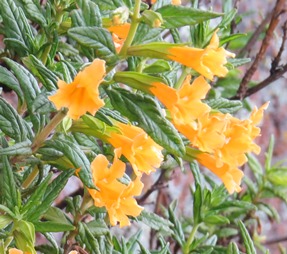
Objective: Manage all cultural inputs to minimize the risk of contamination and facilitate rapid detection of root disease if it develops.
What you need to know: Phytophthora-caused diseases, as well as those caused by many other plant pathogens, are favored by the moist and crowded conditions found in many plant nurseries. Chemicals that suppress Phytophthora symptom expression in the nursery do not eliminate Phytophthora infections.
Best practices:
6.5.1. Use low water pressure and small droplet sizes when irrigating to minimize splash between containers. Use drip irrigation where feasible to minimize the potential for splash between containers. Thoroughly sanitize drip irrigation equipment whenever it is moved between different plants.
6.5.2. Schedule overhead irrigations to minimize the duration of leaf wetness.
6.5.3. Avoid excessive irrigation or stressing plants with inadequate water. Consider water loss from evapotranspiration, inputs from rainfall, size of plants and containers, and other factors when scheduling irrigations.
6.5.4. Keep irrigation wands, nozzles, and hose ends at least 3 feet (1 m) off the ground on clean, sanitized hooks or racks. The same standard applies to any portion of a hose that may come in contact with or will be held over plants or benches during use. Resanitize these items after any contact with the ground or other potentially contaminated surfaces. Overhead hose reels (like those used in auto shops) are somewhat expensive, but potentially an easy way to avoid contaminated hoses in a small nursery.
Objective: Do not apply materials to plants that may be contaminated with pathogens or that will interfere with the testing procedures used to detect and eliminate infected plants in the nursery.
What you need to know: Chemicals and biological control agents used to manage Phytophthora in nursery plants suppress symptom expression but do not eliminate Phytophthora infections. Early detection of a Phytophthora introduction into the nursery may be thwarted by use of these chemicals, allowing spread to occur undetected. Infected plants may show no obvious symptoms, but when planted into the field, disease suppression declines as the chemicals degrade. The pathogens can resume activity, leading to both plant decline and infestation of the planting site. See How Using Fungicides in Nurseries Can Increase the Risk of Moving Phytophthora to Planting Sites for a more complete discussion on this topic.
6.5.5. Do not apply materials to plants (e.g., compost tea, organic amendments, organic fertilizers) unless you have reliable documentation that they
6.5.6. Do not use systemic oomycete suppressive compounds (commonly called “fungicides”, labeled for use against Phytophthora). These compounds suppress Phytophthora and can interfere with Phytophthora detection, but do not eliminate infections. These include fertilizers containing phosphite or phosphonate salts (note: phosphites have suppressive activity against Phytophthora diseases; phosphates are fertilizers with no such activity).
6.5.7. Biological control agents (e.g., soil bacteria or fungi) or other microbial additives applied to plants or potting media must be free of plant pathogens. The use of such agents is discouraged due to their potential to interfere with Phytophthora detection.
3/9/2021 - divided the page into two sections: one on irrigation, the other on applied chemicals and amendments, minor edits, added BMP 6.5.7.